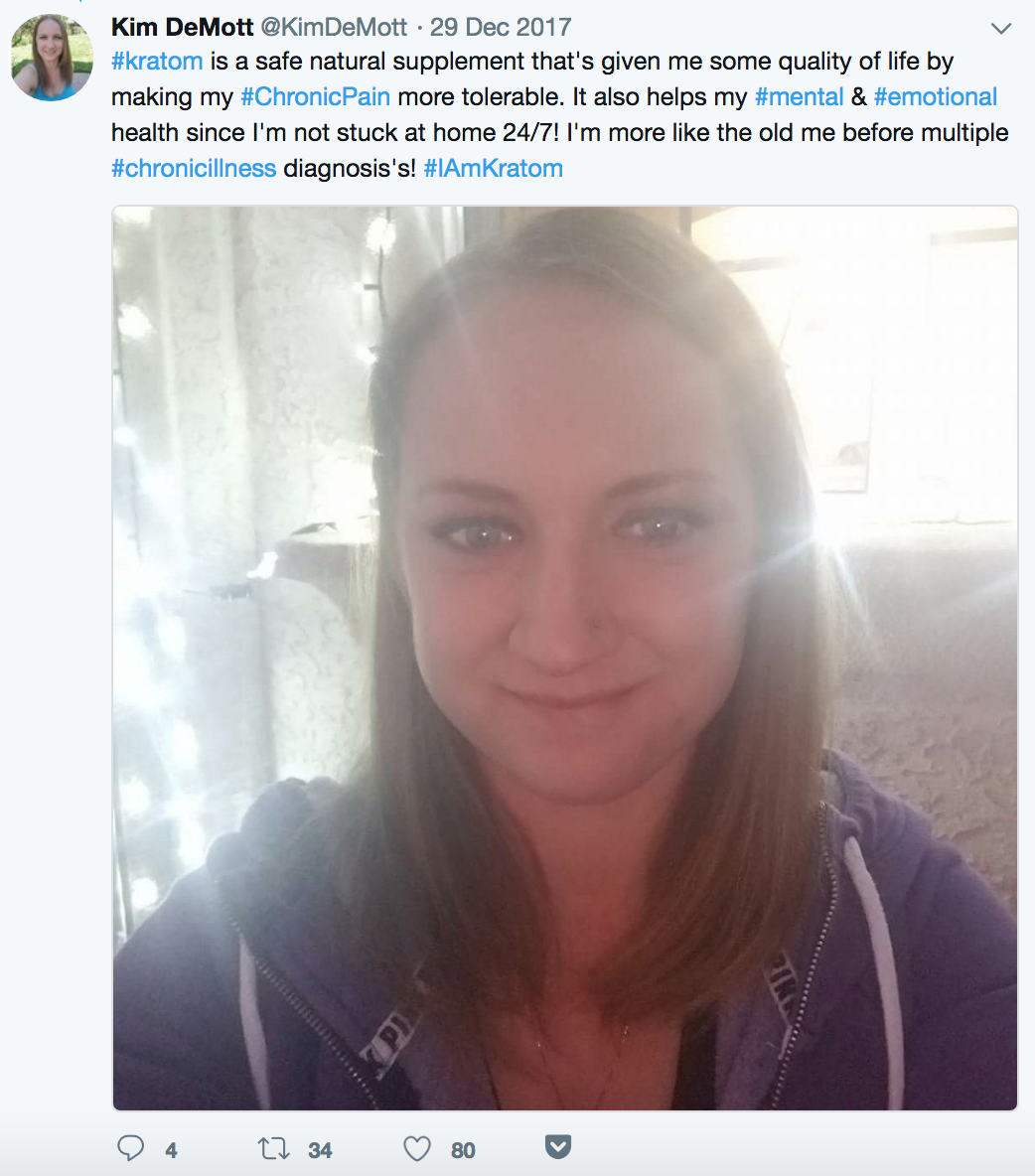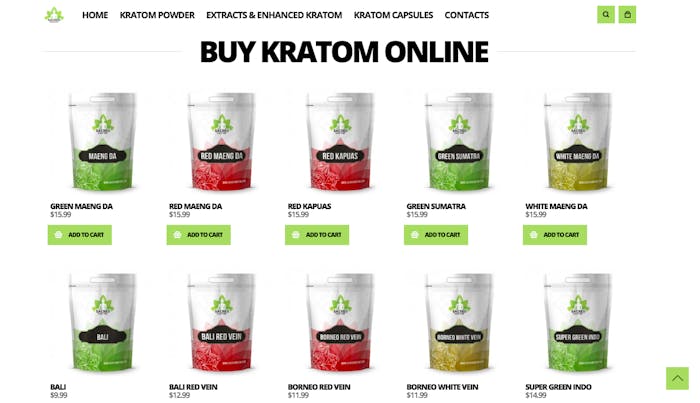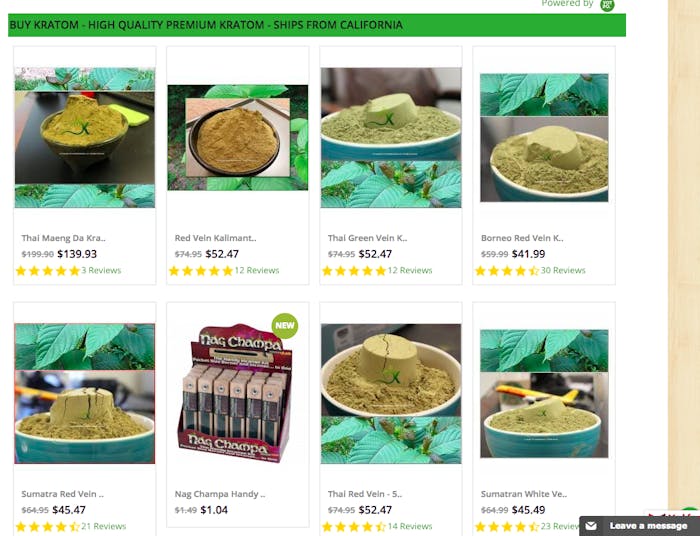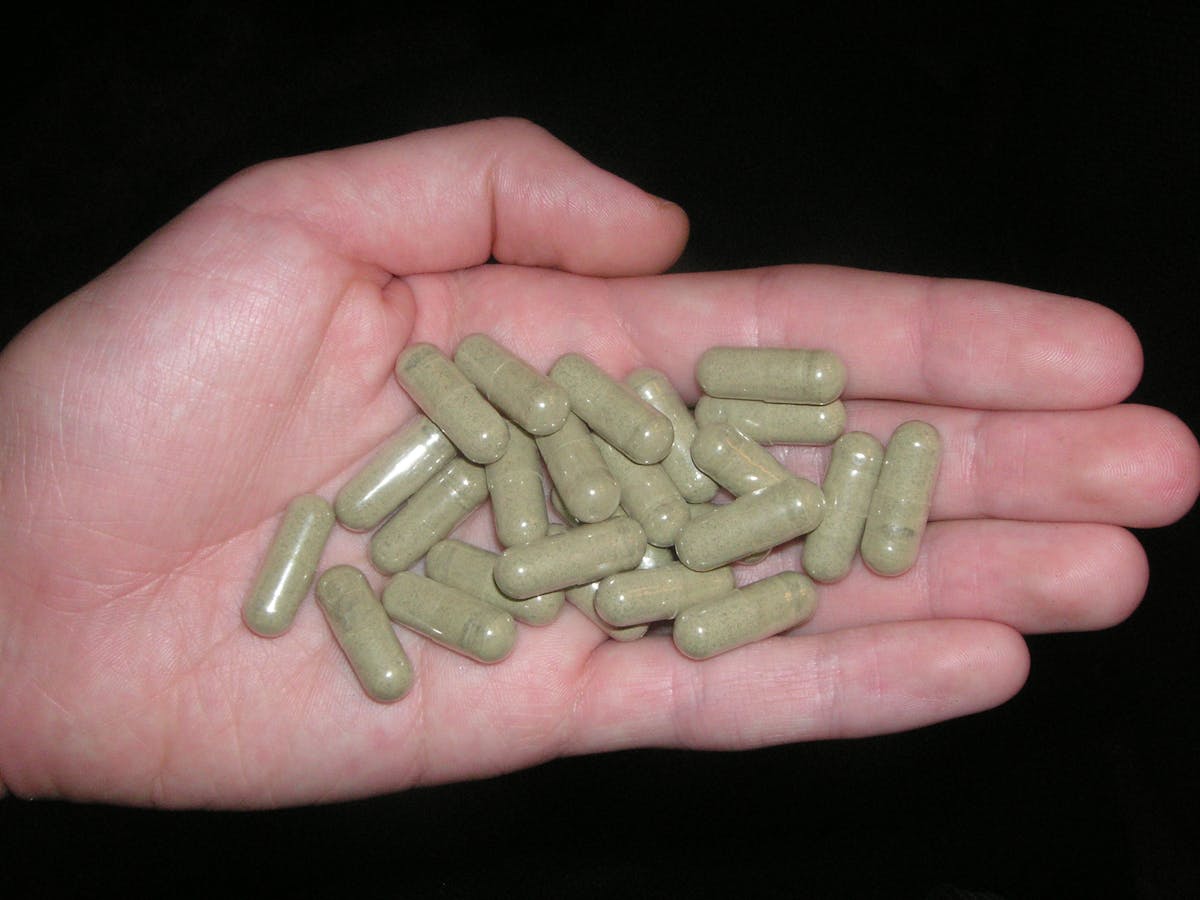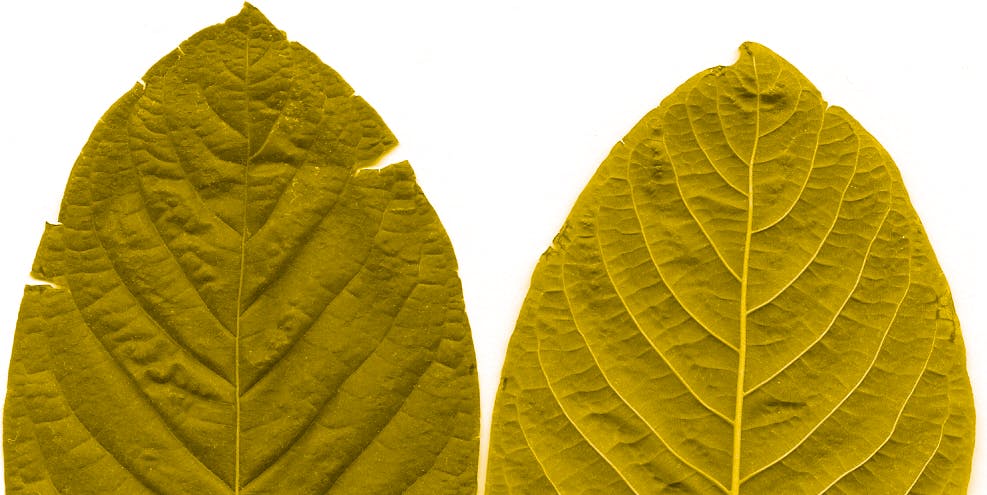
on
Six years ago, Kim DeMott was staring down a lifetime of disability. She was just 27 and had been diagnosed with lupus. Life was hard for her — recurring infections, fainting, rashes, and searing pain throughout her body — but matters would get worse for the stay-at-home mother of two.
Over the next few years, DeMott was diagnosed with fibromyalgia, osteoarthritis, and Sjogren’s syndrome, each of which brought even more pain and discomfort. “I was unable to get dressed, brush my teeth, or take a shower in the same hour,” DeMott tells Inverse. “Getting dressed consisted of putting on clean pajamas. I had to use a cane to walk and get around.”
Throughout this time, she took an extensive daily cocktail of 24 medications — including morphine and oxycodone for pain and benzodiazepines for anxiety — to treat the physical torment that held her back from leading a normal life. “Even with all this stuff, I still had no quality of life,” she says. She was still house-ridden. But where modern medicine fell short, alternative medicine offered hope. To get her life back, she turned to a little-understood herb from Southeast Asia that is currently legal but may not remain so for long.
“I would be lucky if I could make it from my bed to the couch, and I just wasn’t very present in my kids’ lives,” she says.
DeMott attempted suicide in 2016, at which point it became clear that something desperately needed to change. A friend from her chronic pain support group on Facebook introduced her to kratom, and the decision to try it, she says, changed her life.
DeMott’s doctors are astounded at her improvement since she started taking kratom two years ago. With their blessing, she’s gone completely off opioids and benzodiazepines. She’s even stepping down the steroidal anti-inflammatories she takes for lupus. “They were 100 percent supportive,” she says. “They were really happy to hear that I found something more along the lines of an herbal supplement instead of taking all these powerful narcotics.”
Today, DeMott drinks kratom tea four to six times a day, depending on her level of pain. She prepares one cup at a time by mixing a teaspoon of leaf powder into a mason jar of water. Usually, she drinks her tea in the kitchen. Her kratom, puchased on the internet, sits near the coffee and her other supplements. These days, she feels good enough to leave the house and walk her kids to school (or drive, if the weather is uncooperative). She even goes to the gym three times a week, where she uses a treadmill or elliptical machine and occasionally works out with a trainer.
DeMott’s case may sound miraculous, but she’s not alone.

Kratom doesn’t show up on common drug tests, though there definitely are kratom drug tests on the market. Some kratom users report they take it to sleep, and while some note improved sleep benefits and pain relief from different strains, the qualitative difference among kratom varieties is very much up for debate. Typically, it takes 15 to 60 minutes to start feeling kratom’s effects, and depending on dosage, it can last two to four hours. Side effects increase at higher doses and can include nausea, vomiting, and constipation.
In Southeast Asia, kratom (Mitragyna speciosa), a tropical evergreen shrub native to the region, has been used as a stimulant for hundreds of years. Workers use it to perk up on the job, but many kratom consumers use it to wean themselves off of opium or heroin, or as a recreational drug. Authorities in Thailand, where using kratom is illegal, continue to crack down on people who use it.
In the US, as elsewhere, kratom users typically consume the leaves of the plant as a tea or a powder, either in capsules or sometimes just with a “toss and wash” — chasing a mouthful of loose powder with a gulp of water. In Thailand, kratom users often consume it in a mixture known as “4×100,” a combination of kratom, cough syrup, Coca-Cola, and, crucially, ice. (‘’It’s not tasty if it’s not cold,” a Thai kratom user told The New York Times in 2012.) Kratom can also be concentrated by extracting the active chemicals to yield a resin or liquid, a much more potent product than leaf or powder. Unlike typical opioids, kratom is freely available online in the United States.
Over the past 10 years or so, it has rapidly spread beyond its native range and taken root in the US. Even though it doesn’t grow in most places stateside, it can be obtained pretty easily online, at smoke shops in any of the 44 states in which kratom is legal, and even in some independently owned convenience stores. Not only is it easy to get, but it’s also relatively cheap, usually less than $15 per ounce, which can provide more than 20 doses depending on how one uses it.
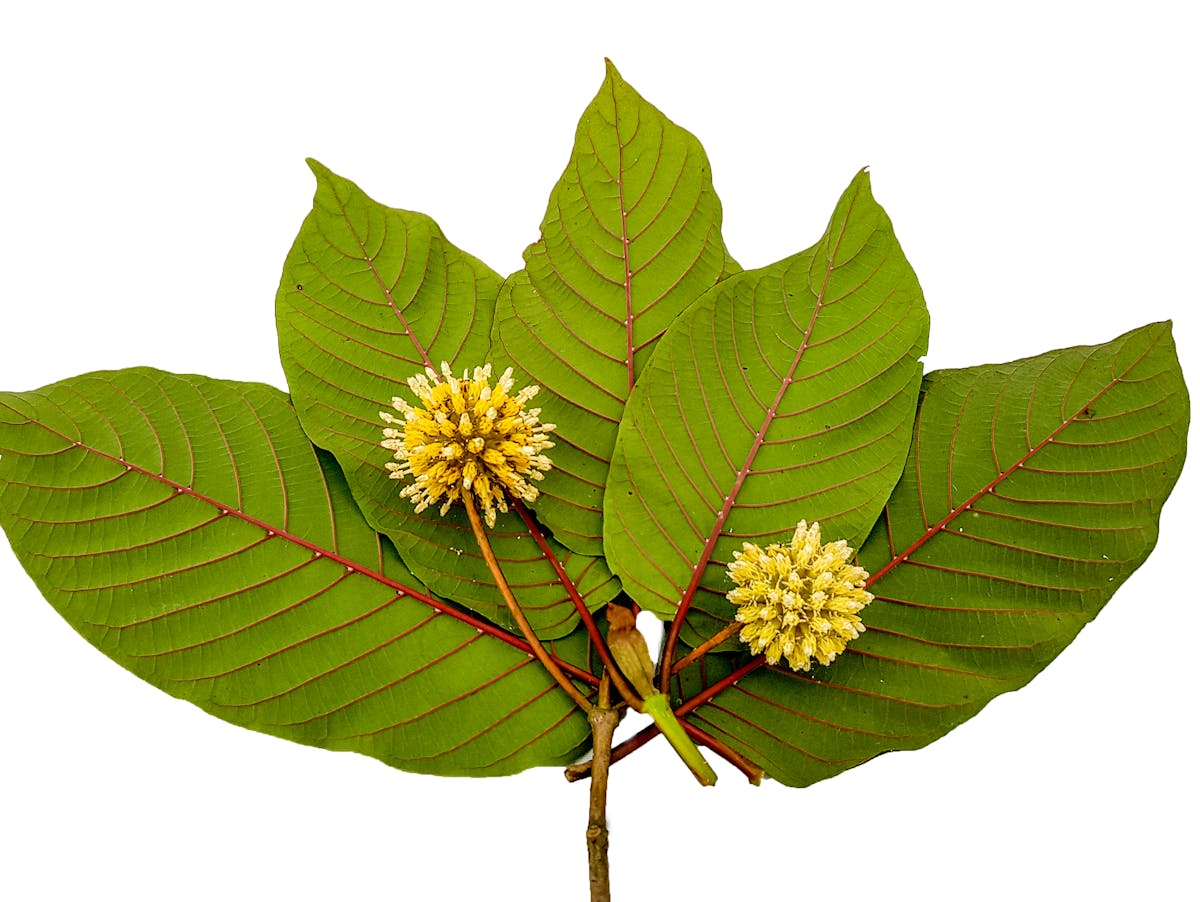

What Is Kratom?
If viewed as a health supplement, kratom simply must adhere to the FDA’s Dietary Supplement Health and Education Act of 1994, which stipulates that supplements can’t claim to diagnose or treat medical conditions and can’t contain any impurities. The FDA also requires anyone who wants to manufacture or distribute any new food item or supplement to file a form called a “New Dietary Ingredients Notification” that provides evidence establishing the product is safe. At this point, no kratom sellers have received a favorable response to such a form from the FDA, which means that it can be marketed as a supplement but not for any specific use or indication.
One company, Industrial Chemicals, LLC, submitted a form and even announced it was approved, but it’s since been reported that the FDA rejected the company’s request. A rejection from the FDA means tha the specific product — in this case, an extract of mitragynine, one of kratom’s main alkaloids — is illegal, but not necessarily that all kratom is illegal.
The FDA’s rationale in its rejection notes there’s no evidence suggesting kratom is safe, which implies that any other request will likely be rejected — unless published research proves kratom is safe. In the absence of FDA-approved New Dietary Ingredients Notification requests, some kratom businesses sell their products as if they’re not intended for human consumption — though it’s not clear why someone would buy it, if not to consume it — under the probably mistaken notion that this clears them of responsibility. This move bears a strong resemblance to the trend in the late ‘90s and early 2000s in which synthetic psychedelic “research chemicals” like 2C-B, 2C-T-7, and all sorts of other alphabet soup drugs, were sold in a similar manner over the internet by sellers exploiting a loophole that had already been closed in 1986 by the Federal Analog Act. The same thing happened more recently with mephedrone, which was disingenuously sold as “bath salts” at gas stations and smoke shops alike.
Though the kratom industry includes US-based distributors, it is also spread around the world and includes vendors that operate informally through direct-to-consumer methods on social media. While reporting this story and occasionally posting about kratom on Twitter and Facebook, I received DMs from two different individuals trying to sell me kratom directly from Indonesia. So while some companies and advocacy groups may be pushing to clean up the industry to pave the way for a legal, regulated market, for others, there’s little incentive. After all, they’re making money right here, right now, with little to no regulatory oversight.
Using Kratom for Physical Pain
Without a pathway to FDA-approved sales and distribution, people continue to seek out kratom for relief from physical illness, often without the guidance of a doctor or pharmacist.
Rhonda Teem, a 47-year-old who lives in Washington, sought out kratom as a safer and less addictive alternative to prescription opioids. She did this on her own, without formal medical advice from her doctor. Teem’s history includes addiction, childhood abuse, and chronic medical issues that complicate the overly simplistic narrative of good people who accidentally get hooked on drugs and bad people who get addicted to recreational drug abuse.
When she was a child, Teem experienced sexual abuse at the hands of a family member, something she credits for her alcohol dependency when she got older. In 1989, when she was 19, Teem broke her back in a car crash. This was the first time she took opioids, which were prescribed by her doctor. She took them and moved on with her life. But in the years that followed, her back got worse. More than 30 surgeries later, she’s been on various opioids, including buprenorphine, hydromorphone, oxycodone, hydrocodone, and fentanyl.
Even on opioids, she didn’t receive much pain relief. She couldn’t ride in a car, cough, or laugh without bending forward because of the pain from the rods in her thoracic spine. The longer she took the drugs, the more her tolerance increased and the more drugs she needed for pain relief. She took to buying drugs on the street, including a combination of illicit prescription drugs and heroin, which she often used intravenously. She was in constant physical and emotional pain, regularly praying to die. She has filed a legal “do-not-resuscitate” order if her heart stops or she stops breathing.
“I’m a believer in Jesus Christ. Ever since that surgery I had been begging him to take me,” she tells Inverse. “Lord, please don’t let me wake up. I’ve got a DNR. I’m 47 years old for crying out loud.”
Her illicit drug use, along with regular emergency room visits, earned her the reputation as a drug-seeker from doctors (In her medical records, there are notes such as “patient told that she will not get Dilaudid from this office.”), making them reluctant to prescribe her medication when her normal dosages weren’t enough. For a while, Teem and her neighbor helped each other out, lending prescription drugs when the other ran out, but in February of this year, Teem’s neighbor said she couldn’t help her anymore. That’s when she suggested Teem try kratom. So she did.
“For the first time, even on opiates, I was pain-free,” she says. “Riding in a car without having to bend forward. Being able to clean the house, pick up my granddaughter. For the first time in my entire life, I wanted to live.”
Even since she started taking kratom, though, Teem has occasionally had a hard time switching all the way over from opioids. Because she doesn’t have guidance from a pharmacist or doctor, she relies on what she reads on the internet to help her figure out dosages. As such, she’s still experimenting and has had trouble anticipating how much she needs to have on hand. Sometimes, she runs out before she has a chance to buy more, which means filling a prescription for fentanyl and putting on a transdermal patch to deal with her pain, even though she doesn’t want to.

“For the first time, even on opiates, I was pain-free.”
“An Atypical Opioid”
For people like Teem and DeMott, for whom legal, FDA-approved prescription drugs haven’t been sufficient to improve their quality of life, kratom can seem like a great option. But its ambiguous legal status makes it hard to figure out the best way for them, and others like them, to obtain and use it.
C. Michael White, Pharm.D., head of the Department of Pharmacy Practice at the University of Connecticut, sees potential in kratom but also acknowledges there’s still a lot we don’t know.
“One of the big problems with kratom is that we have animal studies that’ll tell you some of the potential mechanisms by which kratom does what it does, and they’re very interesting, and they’re different than many of the other pain relievers that we currently have as prescription therapies, so to that extent it’s very promising,” he tells Inverse. “But the problem is that when you actually are looking for human data in clinical trials to really be able to understand it, there’s not a lot of data, and the data that we have is mostly anecdotal information.”
“There’s not a lot of data, and the data that we have is mostly anecdotal information.”
Even though the improvements reported by Teem, DeMott, and people on r/kratom who say their lives have been improved by kratom are compelling, they don’t constitute sufficient scientific evidence on which regulators can make nationwide decisions.
White also questions the scientific validity of the case reports the FDA cited back in February. In the reports, the agency said kratom was associated with 44 deaths since 2009. For comparison, opioid overdoses killed over 40,000 Americans in 2016 alone. And just as we don’t have clinical trials showing kratom’s safety and efficacy as a therapy, we also don’t have sufficient scientific evidence that shows how dangerous it is and how it interacts with other drugs. “It’s hard to tease out effects when you’re only looking at case reports,” he says.
“In a lot of those individual cases, we don’t know the doses that were used. Very often, they were using [kratom] with other drugs, and we don’t know how those other drugs were either co-factors for harm or whether the other drugs may have been causing the harm, and kratom may have been an innocent bystander in the adverse effects that people have.”
In response to this critique of the case reports, an FDA spokesperson responded to Inverse with an excerpt from the FDA’s February announcement:
The adverse event reports underscore the serious and sometimes deadly risks of using kratom and the potential interactions associated with this drug. Overall, many of the cases received could not be fully assessed because of limited information provided; however, one report of death was of particular concern. This individual had no known historical or toxicologic evidence of opioid use, except for kratom. We’re continuing to investigate this report, but the information we have so far reinforces our concerns about the use of kratom.
So, that doesn’t say much other than the FDA is seriously concerned about kratom, especially in light of the limited information available on interactions and toxicity.
There’s not a lot to be learned about the actual prevalence of kratom from case reports since healthcare professionals aren’t often looking for it, so reports won’t represent the number of people using it or having issues from it. This means that people could have ended up in the emergency room experiencing adverse effects from kratom, but nobody knew to look for it. Case reports are simply a starting point for much more rigorous surveys and studies. Perhaps more importantly, though, the confounding factors in case reports make them a very weak form of data, which White says don’t meet the high standards of evidence that the American public should expect from the FDA.
“You can’t base national healthcare decisions off of data that is that poor,” he says.
Data quality issues aside, there’s got to be a better way forward than either criminalizing kratom or leaving it completely unregulated. Researchers like White say there should be a way that both ensures people like Teem and DeMott will be able to get the relief they seek and that the product will be used safely.
Kratom vs. the DEA
One of the major obstacles to a legal and regulated kratom market is the dearth of research examining its clinical effectiveness. This is the catch-22 of the kratom issue at the moment. The FDA requires clinical testing to show that kratom is safe and effective, but the mere fact that kratom is in this legal limbo has kept some scientists from pursuing the research that could bring it into the mainstream. As Tonic reported, some major kratom researchers stopped doing their work after the DEA tried to ban kratom in 2016. A few have picked the mantle back up, but just the prospect of having to invest in the security, application fees, and bureaucracy involved with studying a Schedule I drug has been enough to chill research efforts.
“One of the big risks, if you make it a Schedule I drug, is that you make it very very difficult, if not impossible, to do the research that you would need to be able to answer these questions,” says White. Barring that, we’re left with the same anecdotal evidence: case reports from the FDA versus hearsay and personal anecdotes from online communities.

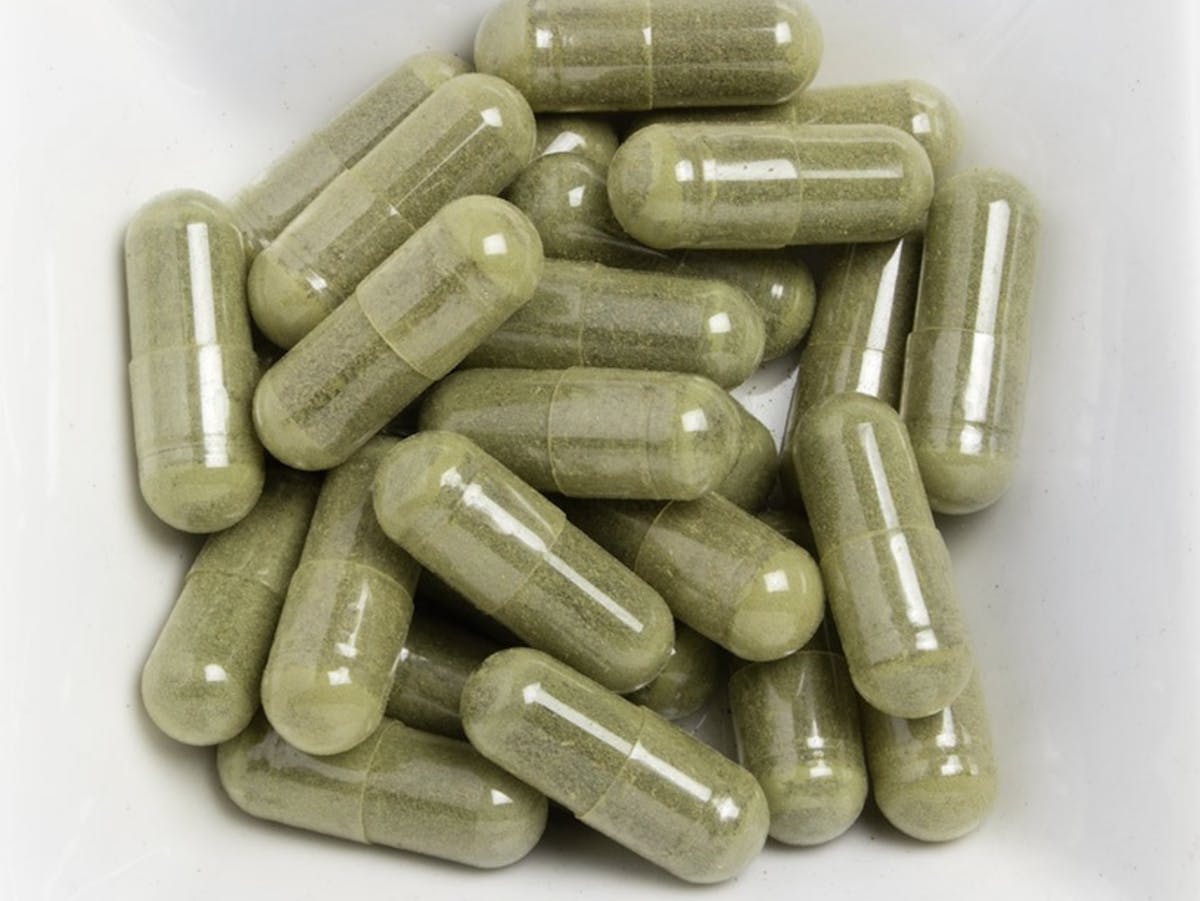
The issues of safety and dependency are what have the FDA so concerned about kratom. And while the stories of people helped by kratom might be compelling, only properly designed clinical trials will convince the FDA. In White’s view, this would also include studies on pharmokinetics — how a substance moves in, around, and out of the body — and studies on how kratom interacts with other drugs. One particular effect he notes, which combines both of these concerns, is mitragynine’s effect on drug metabolism.
An in vitro study from 2013 shows that mitragynine can inhibit the cytochrome P450 enzyme, a liver enzyme involved in metabolizing opioids. If these results hold true for a whole human body and not just cells in a dish, they suggest that if someone is taking kratom for either pain relief or to treat opioid dependency, it could potentially change the way their body processes other opioids, causing unintended health consequences.
“Let’s say for some reason kratom isn’t giving them all the benefits they want it to, or they fell off the wagon for some reason, and they go back to the Percocet that they had before, and they take it,” White explains. “There’s reason to believe that the Percocet they took before may be more dangerous to them now because they were taking kratom.”
The CYP450 enzyme inhibition slows the body’s ability to metabolize opioids, which could lead to unexpectedly high blood levels of an opioid. This, in turn, means that someone could accidentally overdose from a dose that would normally be safe. But again, we don’t know much about this, because the only research that’s been done has either been conducted on animals or in petri dishes. Therefore, it’s not going to be very easy to talk about whether kratom is safe, effective, or anything else until there’s more research on it.
Kratom vs. the FDA
On the opposite end of the regulatory spectrum is Dave Herman, chairman of the board of the American Kratom Association. The AKA is an advocacy group whose mission is to make kratom available for people who want to use it. Herman, for his part, thinks the kratom industry should be self-regulating. And while Herman says most of the nonprofit’s funding comes from consumers, some critics have questioned whether it’s more of an industry advocacy group. The AKA has repeatedly come under fire for refusing to disclose funding sources. Murky money aside, the group’s message is clear.
“We want to maintain the legality of kratom so consumers can make their own choices as to their health and well-being. We don’t believe there’s any reason they shouldn’t be able to do that,” Herman tells Inverse. “That’s really our core issue.”
Herman acknowledges that the FDA could play a role in helping to ensure consumer safety, but also asserts that the industry could be self-regulating, governed by a consortium of industry leaders that would hold each other accountable to help keep product quality safe and consistent. Industry self-regulation, of course, has a mixed track record across all sorts of industries. But Herman and the AKA remain clear: They refuse to let the FDA set the agenda for kratom.
To further its cause for kratom independence, the AKA seeks to communicate with lawmakers through lobbying efforts, with the scientific community by sponsoring a peer-reviewed paper, and directly with the public by publishing announcements on its website. A recent announcement addressed the Salmonella contamination that has been a thorn in the side of the kratom industry these past few months.

Herman and others speculate that contamination fears are a red herring for banning kratom entirely.
“It is clear that the FDA is exploiting the current Salmonella outbreak in kratom to advance their broader battle to ban kratom in the United States,” reads a statement issued by the AKA. This same sentiment echoes across message boards like the r/kratom subreddit, indicating that, whether it has merit or not, it’s gaining traction.
The AKA’s influence is wide-reaching, as evidenced by the group’s lobbying, which deserves significant credit for helping to back down the DEA’s effort to ban kratom in 2016. But it’s just one of the groups working to maintain consumers’ access to kratom.
Since the fall of 2017, DeMott, whose stake is personal, has been involved with grassroots advocacy. She helped spearhead a small rally in her hometown of Sacramento on January 27.
Since then, she’s worked with the Kratom Rally, a grassroots group that gathered a few dozen people in Washington, D.C., this month to show lawmakers how much they care about keeping kratom legal. She emphasizes that this event was not involved with other advocacy groups like the AKA and was purely a consumer-led effort.
“I feel like I just found this and just got my life back, so I don’t want to see it taken from anybody,” she says. “It changed my life so much, so I’m trying to do everything I can to keep kratom legal.”
The way forward for kratom is not at all clear, and even the people who want to keep kratom legal have fundamental disagreements.


